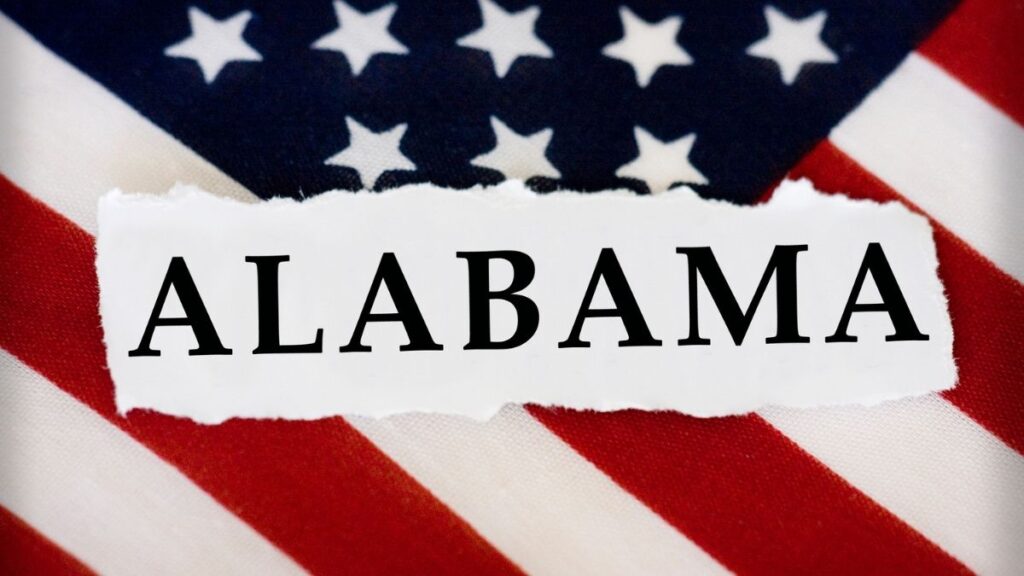
Alabama preppers and aspiring preppers, this article is dedicated to you. We recently covered a brief history of natural disasters that have struck Alabama, so it now makes sense to give some Alabama-specific advice on where and how to start prepping for the state in which you live.
NOTE: Do you live in Alabama? You know your state, so let us know in the comments section how this article can be improved. What did we miss? What did we get right?
Alabama as a State (Prepper Perspective)
To know how to prep in Alabama, it’s helpful to get a picture of the state as a whole so we know what we’re dealing with.
Climate – Alabama summers are some of the hottest in the nation with average daily highs above 90 degrees F. Winters are mild to cold. Alabama has two main weather-related disasters which it faces on a regular occurrence: hurricanes and tornadoes.
Food and Water Resources – Alabama has a 365-day growing season. It has around 39,000 farms, ranks 2nd in the nation in freshwater fish production, 3rd in poultry production, and 3rd in peanut production. (Source.)
Politics – Alabama is a heavily conservative state with only 36% of the people voting Democrat. Alabama is also a gun-friendly state.
Population – Alabama has a population of 4.9 million as of 2021 spread out of 54,420 total square miles results in an average 94.4 people per square mile. This puts it at 27th in the nation by population density.
Geography – Being situated in contact with the Gulf Coast, Alabama is prone to high humidity as well as violent weather coming up from the ocean. As a result, both tornadoes and hurricanes of devastating potential regularly make landfall here.
Alabama is very hot as well, being filled with innumerable swamps, and you need to be prepared to do battle with mosquitoes as a result. The winters here are mild, so ice storms generally aren’t an issue, but even they have occasionally occurred here as well.
Another area of concern is the New Madrid fault line. Earthquakes are most often associated with the West Coast of the United States, but the New Madrid seismic area runs from the Kentucky/Illinois/Missouri area down to Arkansas and the top of Mississippi. This fault line could impact the Alabama region as well – should the unthinkable happen.
Alabama is 7th in the nation when it comes to perennial stream miles. The U.S. Geological Survey estimates that approximately 10% of the freshwater resource in the entire continental U.S. originate in or flow through Alabama. However, in the last 20 years, with additional demands on groundwater and some droughts, some areas of the state have seen a gradual drop in groundwater resources. (Source.)
Alabama Natural Disaster History
This brief look at the which natural disasters have struck Alabama through history is by no means comprehensive. However, it will cover some of the biggest events that have struck the state in relative modern history.
In chronological order…
1) 1916 Irondale Earthquake – This was a 5.1 magnitude earthquake that hit on October 18 right under the town of Irondale. Several other states ended up feeling this earthquake as well, and it resulted in widespread damage throughout the town.
Fortunately, nobody was killed or injured during the quake, but this is largely due to the area not being developed at the time. It’s been said that if such an earthquake were to hit Irondale today, an estimated $1 billion in damages would take place, and there would be deaths as a result.
2) Elba Flood of 1929 – After it rained 30” from March 12-15, residents of nearby towns were told that the town of Elba was flooding and was soon to encroach upon their homes. Within a matter of hours, the flooding did just that. Relief supplies were dropped by airplane, and this flood left thousands stranded on roofs as the flooding was past the first story of much of the nearby city by noon.
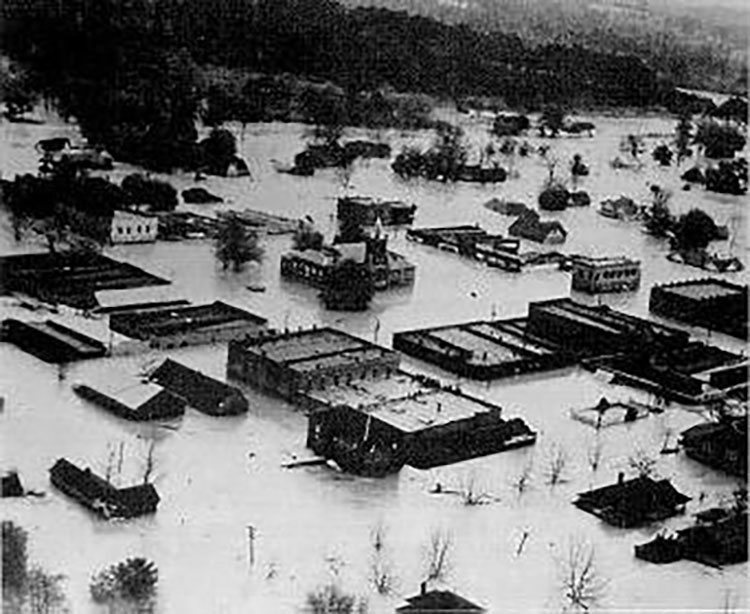
While only one person died, the property damage caused by this flood was catastrophic. (A baby was actually born in the middle of this flood as well, as his mother’s house collapsed piecemeal around them. He was named Noah.) [AT5]
3) Tornado Super Outbreak of 1974 – From April 3-4, 148 tornadoes were confirmed in 13 states. Alabama saw eight of them, with the northern parts of the state being hit the hardest. By the time the storms were over in Alabama, 86 people had been killed, 949 were injured, and over $50 million in damages had taken place.
Many regions were actually hit by tornadoes twice throughout this event, and the end result was the Super Outbreak being the third worst tornado outbreak in Alabama history.
4) Hurricane Frederic of 1979 – This monster hurricane began as a tropical depression over the Atlantic before turning into a Category 4 hurricane in the Gulf of Mexico. Initially striking Florida, it moved about 80 miles off the Gulf Shores of Alabama. The eye of the storm was a whopping 50 miles in diameter. Then it moved ashore on Dauphin Island.

It slammed the Mobile Bay area with winds of 100-145 mph for hours. The storm surge was 12-15 feet on the beaches. Many buildings were destroyed, 5 people lost their lives, and the damage total was $2.3 billion.
5) 1993 Storm of the Century – A large blizzard that left 16” of snow on Birmingham. Being a state that doesn’t receive much accumulated snow, the state did not have the resources or know-how to tackle such a rapid accumulation of snow in such a short amount of time.
The snow was coupled with record cold temperatures throughout Alabama. Sixteen people ended up dying because of this storm.
Alabama is not set up to deal with snowfall of such magnitude, and consequentially this led to much of the state having to shut down after the snow fell as well.
6) 1994 Ice Storm – From February 9-13, a massive ice storm hit the southeastern US. Alabama was hit harder than most others with over $3 billion in damages taking place. Throughout the affected regions, nine people lost their lives to this storm, and widespread power outages occurred as well.
The power was out in some parts of Alabama after this storm for over a month.
7) Tropical Storm Alberto (1994) – This storm slammed into Alabama and then decided to stick around for a little while – five days as a matter of fact. Somewhere between 8-16” of rain was dropped throughout Alabama, and widespread flooding took place as a result.
The Pea River and the Choctawatchee River in particular were hit hard and were responsible for being the cause of much property damage. Overall, it killed 30 Americans and cost over $500 million in damage.
9) Hurricane Ivan (2004) – From September 2-24, this hurricane with 120mph winds wrecked Alabama. Many of the weather observation areas throughout the state were actually destroyed by Ivan so that further data collection on just how bad this storm was becoming impossible. Ivan killed 123 Americans and cost over $18 billion in damage.
9) Hurricane Katrina (2005) – From August 23-31, the largest hurricane ever recorded to hit American soil occurred. While Louisiana is the state most predominantly think of in regard to Katrina, Alabama was actually impacted by the storm as well.
Being a relatively flat state, large parts of Alabama stayed submerged under several feet of water for quite some time before people were able to come back to their land. The result was over $108 billion in damages and the deaths of 1833 people.
10) 2007 Tornado Outbreak Sequence – From February 28 – March 1, two EF4 tornadoes hit Alabama (along with many others), killing 10, and causing $307 million in damage. March alone saw nine tornadoes hit Alabama within the central part of the state.
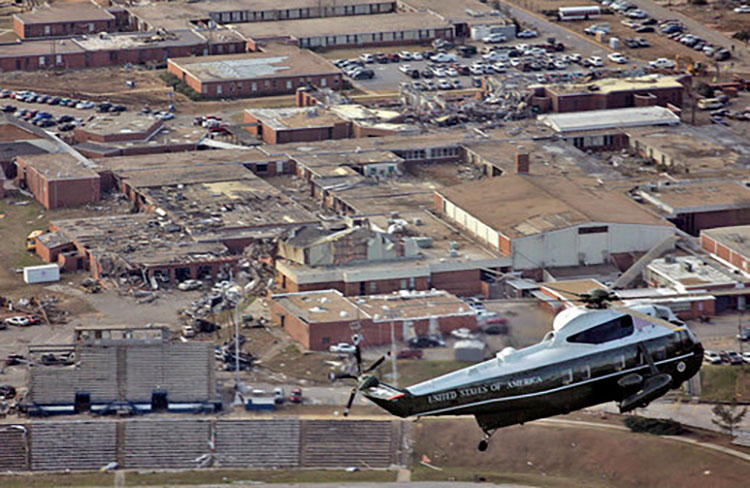
Upwards of three inches of rain, hailstorms, and flash flooding accompanied these tornadoes as well.
10) 2011 Tornado Outbreak – Recognizing a tornado theme here? From April 25-28, the largest tornado outbreak in US history occurred. It killed 238 Alabamians, and cost $11 billion in damages, as a confirmed 29 tornadoes touched down in Alabama, with several of them being F5s.
Even areas that didn’t end up hit with a tornado experienced severe thunderstorms throughout this time. Over 28 Alabama counties reported experiencing tornado damage by the time it was all over.
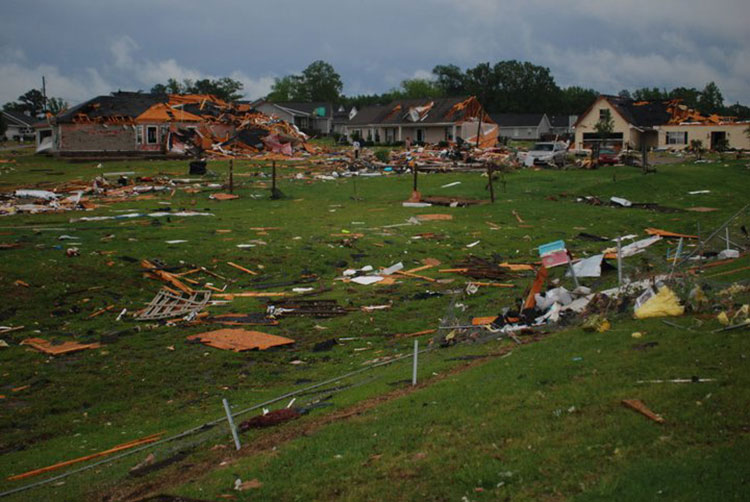
Prepping in Alabama
How do you go about being a prepper in Alabama?
The Basics
The “beans, bullets, and bandages” saying is a good place to start for most any prepper, but it’s vague and over-simplified advice. Still, preppers should always start with the basics and build from there, but not before conducting a personal threat assessment!
That link, combined with the state-specific article, should give you all you need to start wrapping your head around where to being, which in almost all cases begins with water.
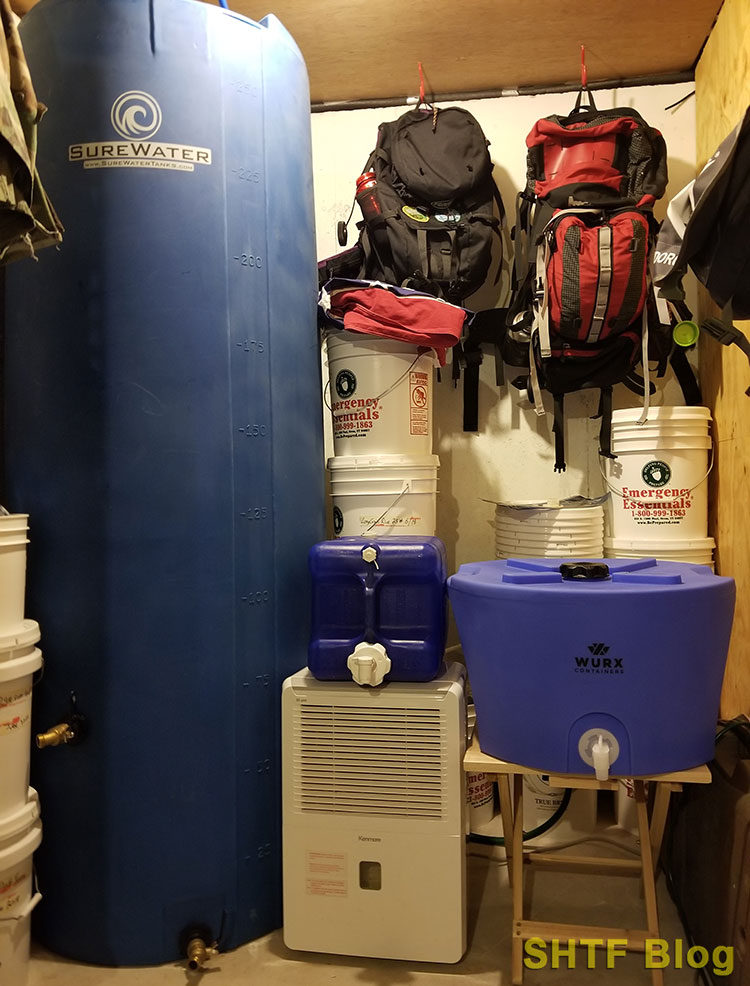
Water, being the most critical resource, isn’t even mentioned in the “beans, bullets, bandages” saying. To start your water supplies, I recommend first determining how much water you need by trying our water calculator. It’s not going to be a perfect calculation for everyone, but it is a good place to start thinking about what you might need and how to store it.
Going into the details of all of the basics a person needs to become prepared goes beyond the scope of this article, but I have recommended articles for you to visit to get started:
Guns and ammo, the favorite category of almost every prepper, is an area that fewer visitors here need help with. If this is an area that you’re less familiar with, my advice is two fold:
- Start by buying a copy of Survival Guns: A Beginner’s Guide by fellow SHTF Blog writer Steve Markwith.
- Once you have an idea on the guns you want/need, visit our ammo calculator to know how much ammo you should stock and how to store it.
Alabama Specific
There are some hazards and threats specific to Alabama (and the related region) that other states may not face. The most obvious being hurricanes and tornadoes. If you’re prepared for both of these events to the best of their ability, combined with the basic prepper supplies previously described, you should be well-suited for any emergency that strikes your state.
Fortunately for Alabamians, they don’t have long, cold winters. This reduces the need to stock heating fuel or require an ample supply of firewood. As cold as it might get in January, you’ll get by with some warm clothes and shelter.
Alabama is also fortunate to have the year-round growing season, so farmers and hobby gardeners can have a “grow your own” approach to supplementing food supplies.
So, specific to Alabama, the two biggest threats are the aforementioned hurricanes and tornadoes. Let’s see how these might influence the two choices anyone must confront in a regional crisis of this type.
Bugging In
If the weather turns bad and you make a choice to stay where you are, you’ll need the supplies to hunker down and wait out the storm. Doing this means having adequate supplies stocked, mainly food and water.
A more hardcore approach would be to build (or buy) a storm shelter of some type.
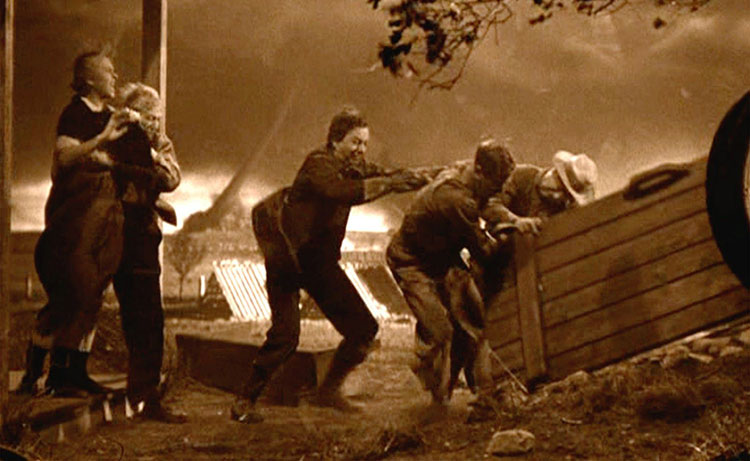
Building your own is possible if you have the time and basic skills. We have a complete list of PDF fallout shelter designs, many of which could easily double as storm shelters. You can also buy a storm shelter, but they can be cost-prohibitive. A barebones one will cost you $5k or more just for the unit itself.
- 10-gauge steel bolt-together, panelized construction with strong, steel reinforcements for use in existing structures
- Triple-locking, single-lever latching mechanism with keyed door handle for extra safety and security
- 10 gauge panels are light enough to handle but strong enough to withstand an EF-5 tornado
- Outswing door for maximum interior space
Stay mindful of the fact that any underground shelter that will protect you from a tornado could turn into an underwater grave during a hurricane that brings in floodwaters!
Sheltering in place when the water supply and power cuts out might also mean needing alternative options for using a bathroom. The most basic, low-cost solution to this is something like the Luggable Loo, a bucket with a toilet seat attached. Marketed as a portable camping “toilet,” this basic setup will make hunkering down significantly more palatable when stuck inside for an extended period.
Make sure to stock some heavy-duty trash bags, toilet paper, and sawdust (or something comparable) inside the bucket itself so it’s always ready for use should the need arise.
Where power outages often accompany adverse weather events, you will need the energy and supplies to cook food, boil water, get news and communicate, operate lights, etc. Perhaps one of the most important pieces of equipment would be an NOAA radio that can be powered by a hand crank.
- 【𝗡𝗢𝗔𝗔 𝗖𝗲𝗿𝘁𝗶𝗳𝗶𝗲𝗱 𝗪𝗲𝗮𝘁𝗵𝗲𝗿 𝗥𝗮𝗱𝗶𝗼】Officially approved by NOAA, the Mesqool emergency radio provides real-time alerts for...
- 【𝗔𝗠/𝗙𝗠/𝗦𝗪 𝗥𝗮𝗱𝗶𝗼 𝘄𝗶𝘁𝗵 𝗦𝗶𝗺𝗽𝗹𝗲 𝗗𝗶𝗮𝗹 𝗧𝘂𝗻𝗶𝗻𝗴】Enjoy strong, clear reception on local AM/FM stations for...
- 【𝗥𝗲𝗹𝗶𝗮𝗯𝗹𝗲 𝗣𝗼𝘄𝗲𝗿 𝗦𝘂𝗽𝗽𝗹𝘆】Unlike many 2000–4000mAh models, this survival radio features a 5000mAh (18500mWh) Li-ion battery—ideal for...
- 【𝟰 𝗟𝗘𝗗 𝗟𝗶𝗴𝗵𝘁 𝗠𝗼𝗱𝗲𝘀 𝗳𝗼𝗿 𝗣𝗼𝘄𝗲𝗿 𝗢𝘂𝘁𝗮𝗴𝗲𝘀】Features a high-powered 3W flashlight—while many radios offer just...
Radios of this type will give you news about the weather, availability of emergency services, etc. Luckily, these are almost always accompanied by internal flashlights that can also be powered by the hand crank.
Bugging in during adverse weather is usually not the best choice, but sometimes it’s the only choice. The alternative – bugging out – is generally a wiser bet.
Bugging Out
Being right in contact with the Gulf Coast, southern Alabama regularly gets hit with hurricanes. Thankfully, we live in an age where technology can give us enough of a heads up of such weather patterns that we can make plans accordingly.

Everyone living in southern Alabama absolutely needs a detailed evacuation/bug out plan for the entire family. Everyone should know where they are going if the need rises to get out of town ASAP. Everyone should know, or have access to, emergency contact numbers, back up bug out locations if you can’t reach the first one, etc.
Have a game plan of where you will go in the event of an impending hurricane, what you will take, and how you will get to your retreat. Make sure you have multiple routes to your destinations as well in case Plan A doesn’t work out.
Everyone should have a pre-packed bug out backpack with all of the supplies needed to survive a minimum of 72 hours. This is your “grab and go” security bag. This is necessary even if you plan to shelter in place. A properly stocked pack should go into any emergency shelter with you, because – if done right – it will have the necessary equipment to help you survive.
A plan to bug out, usually by vehicle, also means having enough gas stored in advance. Anyone that has endured a regional storm of any significant size knows that there’s a rush for gasoline as people plan to stock up for generators or to just leave town.
If a storm is coming in quick the last thing you want to do is be waiting in line at the gas station to leave town. Know how to store gas – and do it.
Communications
Any Alabama preppers worth their salt is going to be positioned to help their neighbors pre and post-disaster. Communities are always stronger when they act just that way – as a community. A well-prepared prepper with the right skills and know-how is a valuable asset during a crisis and often emerges as a leader whether they want the role or not.
The single best way to be positioned to help after a crisis is having the ability to communicate, to know where help is needed. A simple, inexpensive ham radio is one of the most widely accepted forms of post-disaster communication.
If a tornado or hurricane hits an area it is very liable to destroy all the cell phone towers in the area. This means that post-disaster you’re going to have to rely on something other than a phone or a computer to get in contact with somebody else.
- Frequency Range: 144-148MHz, 420-450MHz. Please kindly know that UV-5R would not transmit without this frequency range.
- 128 Channels 50 CTCSS and 104 CDCSS Dual-Band Display, Dual Freq. Display, Dual-Standby, A/B band independent operation, High/Low TX power selectable: Busy channel lock-out(BCLO)
- High/Low TX power selectable: Busy channel lock-out(BCLO),128 Channels 50 CTCSS and 104 CDCSS Dual-Band Display, Dual Freq. Display, Dual-Standby, A/B band independent operation, Keypad Lock. Voice...
- Tri-color background light selectable: 0-9 grades VOX selectable. Large LCD Display
The Baofeng UV-5R handheld ham radio is probably the cheapest way to cover this base. It’s an Amazon bestseller and comes with very high ratings. Just know that for the novice ham operator, figuring it out may be a bit of a challenge.
Worry not! SHTF Blog writer Aden Tate has written a much easier instruction manual for the Baofeng EV-5R.
Radio – whether that be CB, FRS, or amateur – is going to be the key to keeping in contact with your friends, family, church, and neighbors in the aftermath of such an event. This allows you to ensure everybody is okay, to figure out where everybody is at, and to determine what everybody needs.
Alabama Links
Want more information? Consider these resources:
- Alabama Center for Emergency Preparedness (part of the Alabama Public Health Department)
- Alabama Preppers Network (Facebook page that doesn’t seem very active)
- Alabama Survivalist Boards (forum)
- East Alabama Preppers (Facebook page that doesn’t seem very active)
- Randall’s Adventure & Training (survival training in Alabama)
Alabama Preppers Summarized
Tornadoes and hurricanes must be taken seriously. They have been and will continue to threaten Alabama and – unfortunately – lead to widespread damage and death.
By following the advice here, starting with basic preps and then looking at what you face in Alabama itself, you’ll be better prepared for these types of events.
Do you live in Alabama? What are your thoughts on the situation? Are there other preps for Alabama that you believe deserve being discussed? Let us know in the comments below!





3 comments
Your photo of the Elba, Alabama flood for 1929 is of the flood in Elba, California 1929.
If you put ‘Elba, Alabama 1929 flood’ into Google, you’ll get links and photos of the Alabama
flood.
Thanks, Doug. The flood is actually Alabama. I changed the description from California to Alabama.
We are getting a Hamfest together for April 27th at the Alcorn County Arena in Corinth, Ms.
A booth or forum from your group would be welcomed.